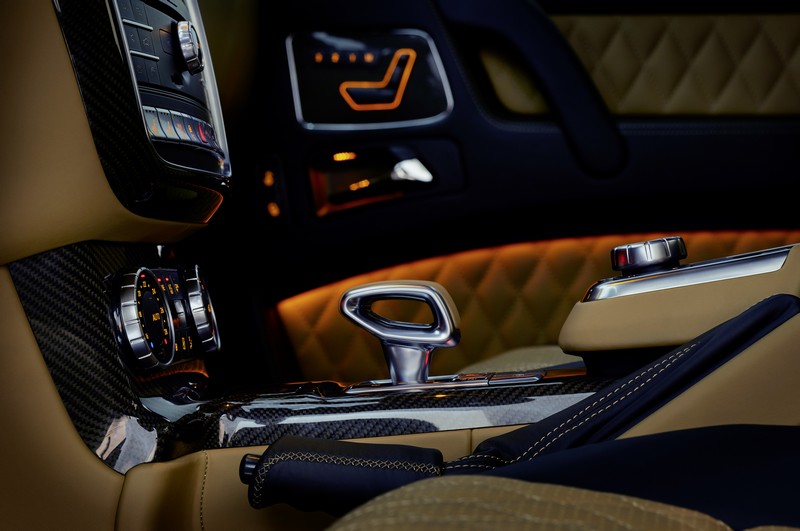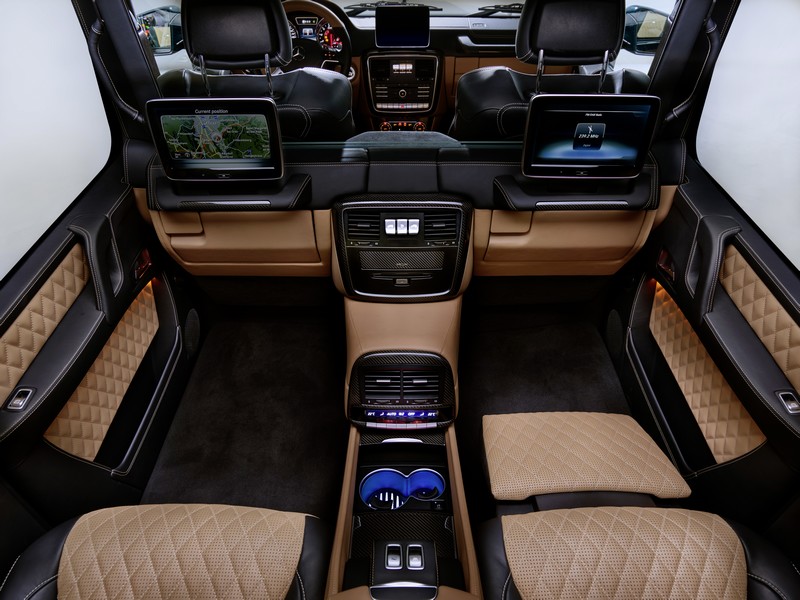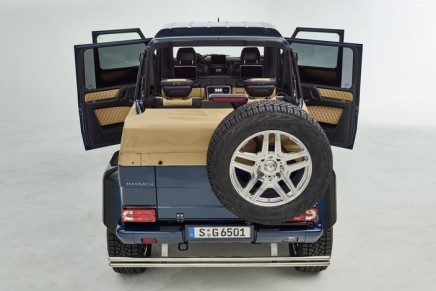The new Mercedes-Maybach G 650 Landaulet offers open-air luxury both on- and off-road. With the new Mercedes-Maybach G 650 Landaulet, the off-road icon demonstrates that the definition of unique luxury can always be taken to a new level.
Landaulet vehicles have a long tradition at the Stuttgart-based car maker. This special class of vehicle included the Benz 25/45 PS of 1910. Other famous examples of this exclusive genre are the Mercedes-Benz 300 d Landaulet (from 1960), the Mercedes-Benz 600 Pullman Landaulet (from 1964) and the Maybach Landaulet (from 2008).
Like all other variants of the G-Class, the new 2017 Mercedes-Maybach G650 Landaulet, too, will be produced by Magna Steyr in Graz, Austria. The open-top four-seater will celebrate its world premiere and sales release at the Geneva Motor Show in March 2017. The market launch of the special series, which will be limited to 99 units, will start in the autumn.
The exceptional G 650 Landaulet follows the equally spectacular variants AMG G 63 6×6 and G 500 4×42. With its superlative V12 engine, portal axles, electric fabric top and exclusive equipment specification in the rear compartment, this very special all-terrain vehicle, which is limited to 99 units, meets the expectations of customers who demand the very highest standards of their vehicle.
While the driver and front passenger are accommodated under the closed roof, the rear passengers can revel in a maximum of comfort: at the press of a button, a large folding top opens electrically to offer a view of the blue sky. The rear passengers enjoy the majestic open-air experience from their single seats. On demand, an electrically operated glass partition separates the rear compartment from the driver’s section. In addition, the glass can be changed from transparent to opaque at the press of a button.
The electrically multi-adjustable individual seats can be conveniently set to a fully reclined position. The active multicontour seats with ENERGIZING massage function have inflatable air chambers to provide high seating comfort and excellent lateral support. Massage programs make for enhanced well-being – according to the principle of a relaxing hot-stone massage, including with heat. The rear seating concept is augmented by a calf rest, which is freely adjustable in length and swivel range.
The other appointments of the G650 Landaulet also leave nothing to be desired. To afford the rear passengers the optimum in comfort, there is a large business console with thermal cup holders between the individual seats. These allow beverages to be cooled or heated over a lengthy period of time. The controls for opening or closing the glass partition are integrated behind the cup holders. Similarly to an aircraft seat, the centre console comes with two tables, which can be easily folded in or out with one hand. The table tops have leather inserts to provide a comfortable writing surface or to allow the use of tablets and notebooks.
The rear “G cockpit” also includes two glove compartments as well as grab handles typical of the G‑Class.The cross-member, which also holds the glass partition, accommodates two 25.4 cm (10‑inch) high-resolution media displays of the Individual Entertainment System.
Customers can choose between three different matching colours for the fabric top as well as four design paint finishes, including a matt finish.
High drive comfort comes courtesy of the most powerful available engine, the Mercedes-AMG V12 biturbo,which delivers a maximum output of 463 kW (630 hp) with a peak torque of 1000 Newton-metres.
Portal axles and 325/55 R 22 tyres
As is customary with the off-road icon, the “G” is forever breaking new ground: unlike previous Landaulets, which were based on prestigious saloons, the Mercedes-Maybach G 650 Landaulet also has what it takes to deliver an unforgettable off-road experience. Familiar from the AMG G 63 6×6 and G 500 4×42, the portal axles provide ample ground clearance of 450 millimetres, allowing the open-top all-terrain vehicle to overcome even extreme obstacles in masterly fashion. In contrast to a conventional rigid axle, the wheels are not at the height of the axle centre, but are instead situated much further down on the axle heads owing to the portal transmission.





















